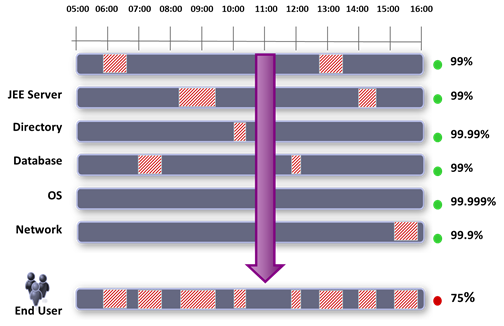Application Performance Management
|
As application architecture gets more complex so is the number of stakeholders involved in incident analysis and resolution. As a result, precious time is wasted on finger pointing as war room mentality prevails. This impacts MTTR and overall performance of corporate IT. Consider the example. Each individual SLA is 99% or better, yet their overlap reduces overall availability of Mission critical application to only 75%:
Every year billions of dollars are spent on implementation of Application Performance Management (APM) systems. This is a market with constant annual growth, and the trend is clearly accelerating. And it isn't surprising - since APM assures stability and performance of revenue generating critical business applications. That's why we consider it a special case of agile devops and agile monitoring. Gartner also placed APM into separate category, and offered a formal definition of Application Performance Monitoring system. It includes five dimensions:
|

